The question
The recent, vicious murder of George Floyd, an unarmed Black man beloved by family and neighbors, unleashed a tempest of principled outrage in the United States and abroad. Beyond the warranted moral responses to an egregious crime, the moment calls for sociological explanation. In the past, African American men, unarmed and defenseless, have died at the hands of slave traders, plantation owners, lynch mobs, marauders, and vigilantes of all kinds, as well as police officers. In every case, the aftermath has been glacially slow change amidst vacuous calls for reform. Unprecedented is the extent to which George Floyd’s death generated thunderous protests domestically and across international borders. What has brought about the large-scale demonstrations bringing together unparalleled numbers of people from various generations, ethnicities, and racial filiations? To answer that question, I examine proximate and deep-seated causes.
Immediate precipitants
“The pandemic did more than steal jobs and force people into confinement: It also exposed gross inequalities of class and race that have been a subject of interest among economists and sociologists.”The convergence between the event—vividly captured in actual time—and conditions created by the Covid-19 pandemic potentially triggered the mass mobilizations seen across the world. Of exceptional quality and duration is the visual document created by Darnella Frazier, a 17-year-old woman who had the presence of mind to film Floyd’s killing in a single-take shot lasting almost nine minutes. Millions watched the video on Facebook, Twitter, and on television. This was not the first time that political mobilization was rapidly unleashed through the use of smart phones and the dissemination of stirring images via social media. Social science research gives testimony to the utility of advanced technology in the promotion of social movements.1→David Faris, “Revolutions without Revolutionaries? Network Theory, Facebook, and the Egyptian Blogosphere,” Arab Media and Society, September 29, 2008.
→Malcom Gladwell and Clay Shirky, “From Innovation to Revolution: Do Social Media Make Protests Possible?” Foreign Affairs 90, no. 2 (2011): 153–154.
→Ronald R. Aminzade et al., Silence and Voice in the Study of Contentious Politics (Cambridge: Cambridge University Press, 2001).
→Clay Skirky, “The Political Power of Social Media: Technology, the Public Sphere, and Political Change,” Foreign Affairs 90, no. 1 (2011): 28–41. In this case, large numbers of people in the United States viewed the event, not once but repeatedly for a simple reason: The pandemic kept them at home, “sheltered in place.” Among those who watched were many facing social isolation, unemployment, and an uncertain future as a result of the global health crisis.2Diana Enriquez and Adam Goldstein, “Covid-19’s Socio-Economic Impact on Low-Income Benefit Recipients: Early Evidence from Tracking Surveys” (unpublished manuscript, 2020). But the pandemic did more than steal jobs and force people into confinement: It also exposed gross inequalities of class and race that have been a subject of interest among economists3→Anthony B. Atkinson, Inequality: What Can Be Done? (Cambridge, MA: Harvard University Press, 2018).
→Branko Milanovic, Global Inequality: A New Approach for the Age of Globalization (Cambridge, MA: Harvard University Press, 2018).
→Thomas Piketty and Arthur Goldhammer, The Economics of Inequality (Cambridge, MA: Harvard University Press, 2015).
→Joseph Stiglitz, The Price of Inequality: How Today’s Divided Society Endangers Our Future (New York: W.W. Norton & Company, 2013). and sociologists.4→Dalton Conley, Being Black, Living in the Red: Race, Wealth, and Social Policy in America (Oakland, CA: University of California Press, 2009).
→G. William Domhoff, Who Rules America: The Triumph of the Corporate Rich (New York: McGraw Hill, 2014).
→Charles Hurst, Heather M. Fitzgibbon, and Anne M. Nurse, Social Inequality: Forms, Causes, and Consequences (London: Routledge, 2019).
→Brendan P Mullan, “The Sociology of Inequality and the Rise of Neo Inequality,” Sociological Focus 50, no. 2 (2017): 105–124.
Even before the pandemic began, researchers worried about the health profile of Black Americans, in particular those who are working-class and poor, who exhibit shorter than average life spans and suffer from ailments, like diabetes, hypertension, and obesity.5Jessica Y. Ho and Arun S. Hendi, “Recent Trends in Life Expectancy across High Income Countries: Retrospective Observational Study,” BMJ (British Medical Journal) 362 (August 2018). Class disparities, however, do not tell the whole story. As Tod Hamilton and Tiffany Green have noted, regardless of income and level of education, Black women are more likely than white women to die in childbirth and to give birth to infants with special needs.6Tod Hamilton and Tiffany Green, “From the West Indies to Africa: A Universal Generational Decline in Health Among Blacks in the United States,” Social Science Research 73 (July 2018): 163–174. Higher rates of morbidity and mortality among Black mothers and their children may be related to tensions resulting from differential treatment. Some research forcefully suggests that Black women receive care of lesser quality than do women in other populations. African Americans, in general, face barriers when trying to secure proper health insurance. Among those at greater risk of contracting Covid-19 are “essential workers,” many of them Black, who cannot afford to shelter in place. Such individuals are also more likely to use public transportation, which increases the risk of contamination. In other words, the pandemic made visible huge inequalities and fueled existential anxieties magnified by the sight of George Floyd’s murder.7Floyd’s killing was one many occurring over the last decades. It followed the deaths of Ahmaud Arbery and Breonna Taylor over the course of only three months, a fact that further heightened anger and frustration. Arbery, a 25-year-old African American man, was shot dead by vigilantes on February 23, near Brunswick in Glynn County, Georgia. Taylor was killed by a police officer in Louisville, Kentucky, while sleeping at home in her own bed on March 13. The crime was a cruel reminder of the neglect with which people of color have been treated. It was also a call to action.
Deep causes
A first, profound factor relates to the enduring power of race and racism in the United States. Matthew Desmond and Paul Starr offer compelling arguments about the inextricable relationship between enslavement and US capitalism.8→Matthew Desmond, Evicted: Poverty and Profit in the American City (New York: Broadway Books, 2017).
→Paul Starr, “Racial Slavery as an Entrenched Contradiction,” in Entrenchment: Wealth, Power, and the Constitution of Democratic Societies (New Haven: Yale University Press, 2019). Nearly three centuries of legal bondage were followed by Reconstruction, a period spanning little over 12 years of political and economic advancement for African Americans. What followed, however, were the Jim Crow laws in the South and less formal but almost equally devastating obstructions in the North. “Gentlemen’s agreements,” “block busting,” “white flight,” and “red lining” produced high rates of residential segregation which in turn led to what Douglas S. Massey and Nancy A. Denton called the American Apartheid.9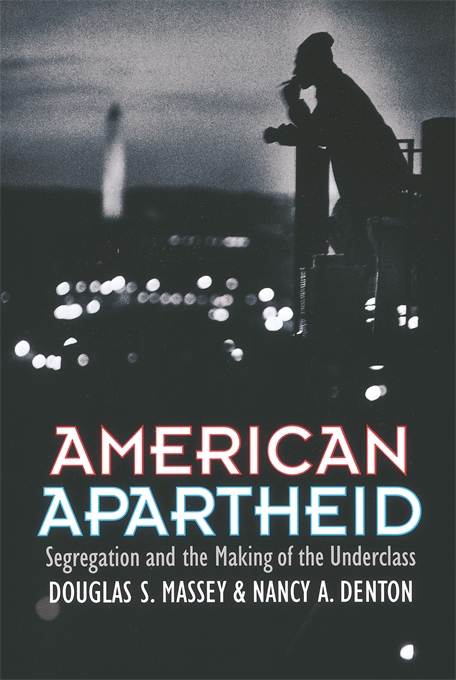 Cambridge, MA: Harvard University Press, 1998More Info → They convincingly showed that the most important factor leading to the creation of impoverished Black neighborhoods over the first half of the twentieth century was the refusal of white populations to share space with African Americans. Black people never received the kind of investments that the US government deployed on behalf of European immigrants and their descendants through legislation like the GI Bill. Instead, dispossession, containment, surveillance, and penalization10
Cambridge, MA: Harvard University Press, 1998More Info → They convincingly showed that the most important factor leading to the creation of impoverished Black neighborhoods over the first half of the twentieth century was the refusal of white populations to share space with African Americans. Black people never received the kind of investments that the US government deployed on behalf of European immigrants and their descendants through legislation like the GI Bill. Instead, dispossession, containment, surveillance, and penalization10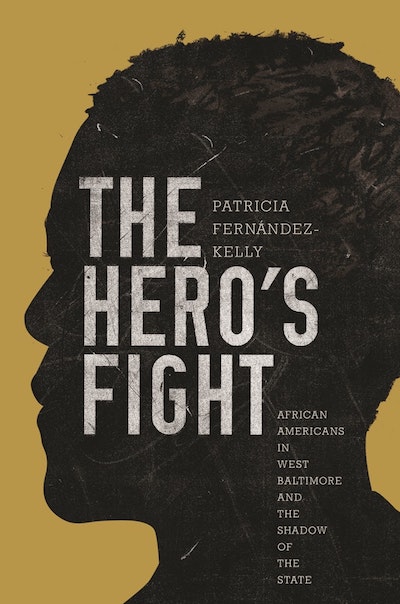 Princeton, NJ: Princeton University Press, 2015More Info → became enduring experiences in Black residential areas.
Princeton, NJ: Princeton University Press, 2015More Info → became enduring experiences in Black residential areas.
In the 1960s, the civil rights movement brought about political improvements for African Americans, especially regarding voting rights. Those gains, however, occurred without proper economic supports. A large system of public assistance emerged but it mostly benefited philanthropic foundations, developers, government agents, and subcontractors.11 New York: New York University Press, 2016More Info → The legacy of abandonment was entrenched poverty and its discontents: Large numbers of disaffected young people without access to a proper education; teenaged mothers raising children in dire conditions, absent fathers unable to support families, higher likelihood of eviction, homelessness, and lives diminished by predatory lenders.12→Desmond, Evicted.
New York: New York University Press, 2016More Info → The legacy of abandonment was entrenched poverty and its discontents: Large numbers of disaffected young people without access to a proper education; teenaged mothers raising children in dire conditions, absent fathers unable to support families, higher likelihood of eviction, homelessness, and lives diminished by predatory lenders.12→Desmond, Evicted.
→Mitchell Duneier, Sidewalk (New York: Farrar, Straus and Giroux, 2000).
→Kathryn Edin and Timothy J. Nelson, Doing the Best I Can: Fatherhood in the Inner City (Oakland, CA: University of California Press, 2014).
→Kathryn Edin, Maria Kefalas, Promises I Can Keep: Why Poor Women Put Motherhood before Marriage (Oakland, CA: University of California Press, 2011).
→Kathryn Edin and H. Luke Shaefer, $2.00 a Day: Living on Almost Nothing in America (Boston: Mariner Books, 2016).
→Margeum Kim, Marissa D. King, and Jennifer L. Jennings, “ADHD Remission, Inclusive Special Education, and Socioeconomic Disparities,” SSM – Population Health 8 (August 2019).
→Jennifer L. Jennings and Douglas L. Lauen, “Accountability, Inequality, and Achievement: The Effects of the No Child Left Behind Act on High and Low-Stakes Test Scores,” RSF: The Russell Sage Foundation Journal of the Social Sciences 2, no. 5 (2016): 220–241.
→Douglas S. Massey et al., “Riding the Stagecoach to Hell: A Qualitative Analysis of Racial Discrimination in Mortgage Lending,” City & Community 15, no. 2 (June 2016): 118–136.
→Patrick Sharkey, Stuck in Place: Urban Neighborhoods and the End of Progress toward Racial Equality (Chicago: The University of Chicago Press, 2013).
→Frederick F. Wherry, Kristin S. Seefeldt, and Anthony Alvarez, Credit Where It’s Due: Rethinking Financial Citizenship (New York: Russell Sage, 2019). The Fragile Families Project, led by Sara McLanahan at Princeton University, offers the best longitudinal data reflecting the long-term effects of those trends.13Sara McLanahan et al., eds. “Fragile Families,” The Future of Children 20, no. 2 (2010). And, as Adam Goldstein and Tod Hamilton find, bigotry is not a thing of the past: Donald Trump’s election emboldened discrimination in the labor market.14Adam Goldstein and Tod Hamilton, “Dog Whistles and Work Hours: Did Trump’s Electoral Victory Heighten Racial Discrimination in the Labor Market?” (unpublished manuscript, 2019). Lasting disregard for this country’s legacy of inequality has had a cumulative effect across generations that, under circumstances such as the ones witnessed today, can lead to public explosions. That is because civil disturbances are about the only means of expression available to people without power. That was true among French revolutionaries and is true now among exasperated Black activists and their allies.15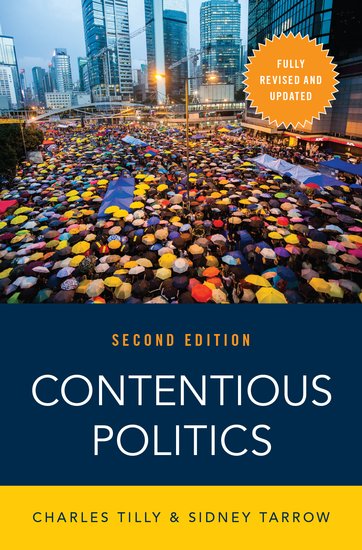 Oxford: Oxford University Press, 2015More Info →
Oxford: Oxford University Press, 2015More Info →
There is a second, deep cause at work: Emerging forms of surveillance and repression associated to broad economic change. Starting in the 1980s, the application of neoliberal economic principles spurred de-industrialization in advanced countries.16Miguel A. Centeno and Joseph Cohen, “Neoliberalism,” Emerging Trends in the Social and Behavioral Sciences, May 15, 2015. Millions of American jobs were lost as corporations shifted manufacturing to less developed nations. Those most affected were white people on whose behalf government had made massive investments over the first half of the twentieth century. African Americans, many of them migrants from the rural South, were among the last to be hired for positions in industry that offered good wages and union membership. They were also first to be fired when plants and mills began to close down.17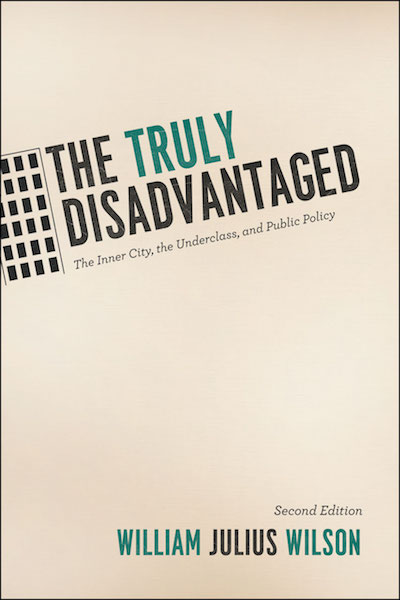 1987; repr., Chicago: The University of Chicago Press, 2012More Info → Unskilled and semiskilled workers became increasingly redundant in sectors demanding high levels of formal education and technological expertise. African Americans, especially young men, were heavily affected by the reshuffling of employment opportunities. Clustered in racially marked neighborhoods and with little access to a proper education or well-compensated employment, many channeled their energy into illegal occupations. In the 1980s, the War on Drugs became a war against impoverished Americans, especially young men who then faced increased probabilities of detention and imprisonment. Bruce Western and Devah Pager discuss the consequences of that tendency.18→Bruce Western, Punishment and Inequality in America (New York: Russell Sage, 2007).
1987; repr., Chicago: The University of Chicago Press, 2012More Info → Unskilled and semiskilled workers became increasingly redundant in sectors demanding high levels of formal education and technological expertise. African Americans, especially young men, were heavily affected by the reshuffling of employment opportunities. Clustered in racially marked neighborhoods and with little access to a proper education or well-compensated employment, many channeled their energy into illegal occupations. In the 1980s, the War on Drugs became a war against impoverished Americans, especially young men who then faced increased probabilities of detention and imprisonment. Bruce Western and Devah Pager discuss the consequences of that tendency.18→Bruce Western, Punishment and Inequality in America (New York: Russell Sage, 2007).
→Devah Pager, Marked: Race, Crime, and Finding Work in the Era of Mass Incarceration (Chicago: The University of Chicago Press, 2009). Sarah McLanahan and Wade Jacobsen offer additional data about the impact of parental imprisonment on families, especially children.19Sara McLanahan and Wade Jacobsen, “Diverging Destinies Revisited,” in Families in an Era of Increasing Inequality: Diverging Destinies, ed. Paul R. Amato et al. (New York: Springer, 2014), 3–24. Mass incarceration foreshadowed an emerging function of the state in the age of neoliberalism:20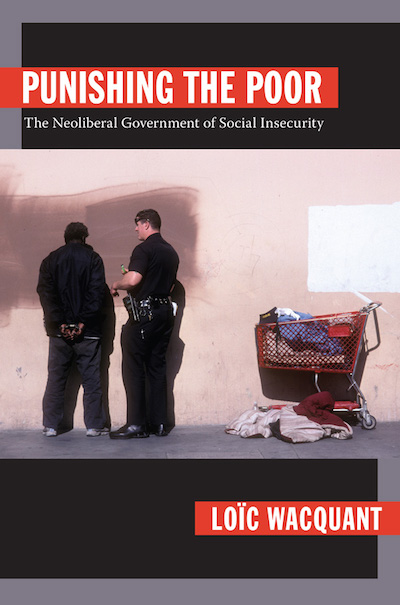 Durham, NC: Duke University Press, 2009More Info → The containment of workers made redundant by advanced technology and the internationalization of the economy.
Durham, NC: Duke University Press, 2009More Info → The containment of workers made redundant by advanced technology and the internationalization of the economy.
With some variants, the same phenomena ensued in countries like the United Kingdom and France where long-standing racial and class inequalities exist. More than three generations after their ancestors arrived in cities like London and Manchester, Pakistani Britons have not been fully integrated into British society. The descendants of Algerians and, more recently, North Africans, endure high levels of discrimination in cities such as Paris and Lyon. Like African Americans, they are disproportionately affected by the Covid-19 pandemic. They too have few avenues for social mobility. They too are detached from well-paying jobs or are absorbed into menial, often dangerous, forms of employment. They too are at risk of arrest and incarceration. Their experience resonates with that of Black populations in the United States. George Floyd’s death was a vivid reminder of the inequities hitting hard on the bodies of an international class of vulnerable people rendered increasingly superfluous as providers of labor and managed by national governments through surveillance and violence.
Amidst the dismal landscape, there is hope. The protestors clamoring for justice and the radical overhaul of systems of law and order both in the United States and elsewhere constitute the most diverse political constituency ever—they represent multiple nationalities, generations, races, and education levels. Empathy drives them to the streets overpowering fears of the pandemic.21I am grateful to Lisa Portes, Head of Directing at the Theatre School, DePaul University, for drawing my attention to the question of empathy as a factor causing mass mobilization in the wake of George Floyd’s murder. What fueled public protest was the universal sentiment that bonds humans together despite differences of condition or appearance—a capacity to feel the suffering of others as if it were personal. That too should be a subject of sociological interest.
Banner photo credit: Lorie Shaull/Flickr
References:
→Malcom Gladwell and Clay Shirky, “From Innovation to Revolution: Do Social Media Make Protests Possible?” Foreign Affairs 90, no. 2 (2011): 153–154.
→Ronald R. Aminzade et al., Silence and Voice in the Study of Contentious Politics (Cambridge: Cambridge University Press, 2001).
→Clay Skirky, “The Political Power of Social Media: Technology, the Public Sphere, and Political Change,” Foreign Affairs 90, no. 1 (2011): 28–41.
→Branko Milanovic, Global Inequality: A New Approach for the Age of Globalization (Cambridge, MA: Harvard University Press, 2018).
→Thomas Piketty and Arthur Goldhammer, The Economics of Inequality (Cambridge, MA: Harvard University Press, 2015).
→Joseph Stiglitz, The Price of Inequality: How Today’s Divided Society Endangers Our Future (New York: W.W. Norton & Company, 2013).
→G. William Domhoff, Who Rules America: The Triumph of the Corporate Rich (New York: McGraw Hill, 2014).
→Charles Hurst, Heather M. Fitzgibbon, and Anne M. Nurse, Social Inequality: Forms, Causes, and Consequences (London: Routledge, 2019).
→Brendan P Mullan, “The Sociology of Inequality and the Rise of Neo Inequality,” Sociological Focus 50, no. 2 (2017): 105–124.
→Paul Starr, “Racial Slavery as an Entrenched Contradiction,” in Entrenchment: Wealth, Power, and the Constitution of Democratic Societies (New Haven: Yale University Press, 2019).
→Mitchell Duneier, Sidewalk (New York: Farrar, Straus and Giroux, 2000).
→Kathryn Edin and Timothy J. Nelson, Doing the Best I Can: Fatherhood in the Inner City (Oakland, CA: University of California Press, 2014).
→Kathryn Edin, Maria Kefalas, Promises I Can Keep: Why Poor Women Put Motherhood before Marriage (Oakland, CA: University of California Press, 2011).
→Kathryn Edin and H. Luke Shaefer, $2.00 a Day: Living on Almost Nothing in America (Boston: Mariner Books, 2016).
→Margeum Kim, Marissa D. King, and Jennifer L. Jennings, “ADHD Remission, Inclusive Special Education, and Socioeconomic Disparities,” SSM – Population Health 8 (August 2019).
→Jennifer L. Jennings and Douglas L. Lauen, “Accountability, Inequality, and Achievement: The Effects of the No Child Left Behind Act on High and Low-Stakes Test Scores,” RSF: The Russell Sage Foundation Journal of the Social Sciences 2, no. 5 (2016): 220–241.
→Douglas S. Massey et al., “Riding the Stagecoach to Hell: A Qualitative Analysis of Racial Discrimination in Mortgage Lending,” City & Community 15, no. 2 (June 2016): 118–136.
→Patrick Sharkey, Stuck in Place: Urban Neighborhoods and the End of Progress toward Racial Equality (Chicago: The University of Chicago Press, 2013).
→Frederick F. Wherry, Kristin S. Seefeldt, and Anthony Alvarez, Credit Where It’s Due: Rethinking Financial Citizenship (New York: Russell Sage, 2019).
→Devah Pager, Marked: Race, Crime, and Finding Work in the Era of Mass Incarceration (Chicago: The University of Chicago Press, 2009).













